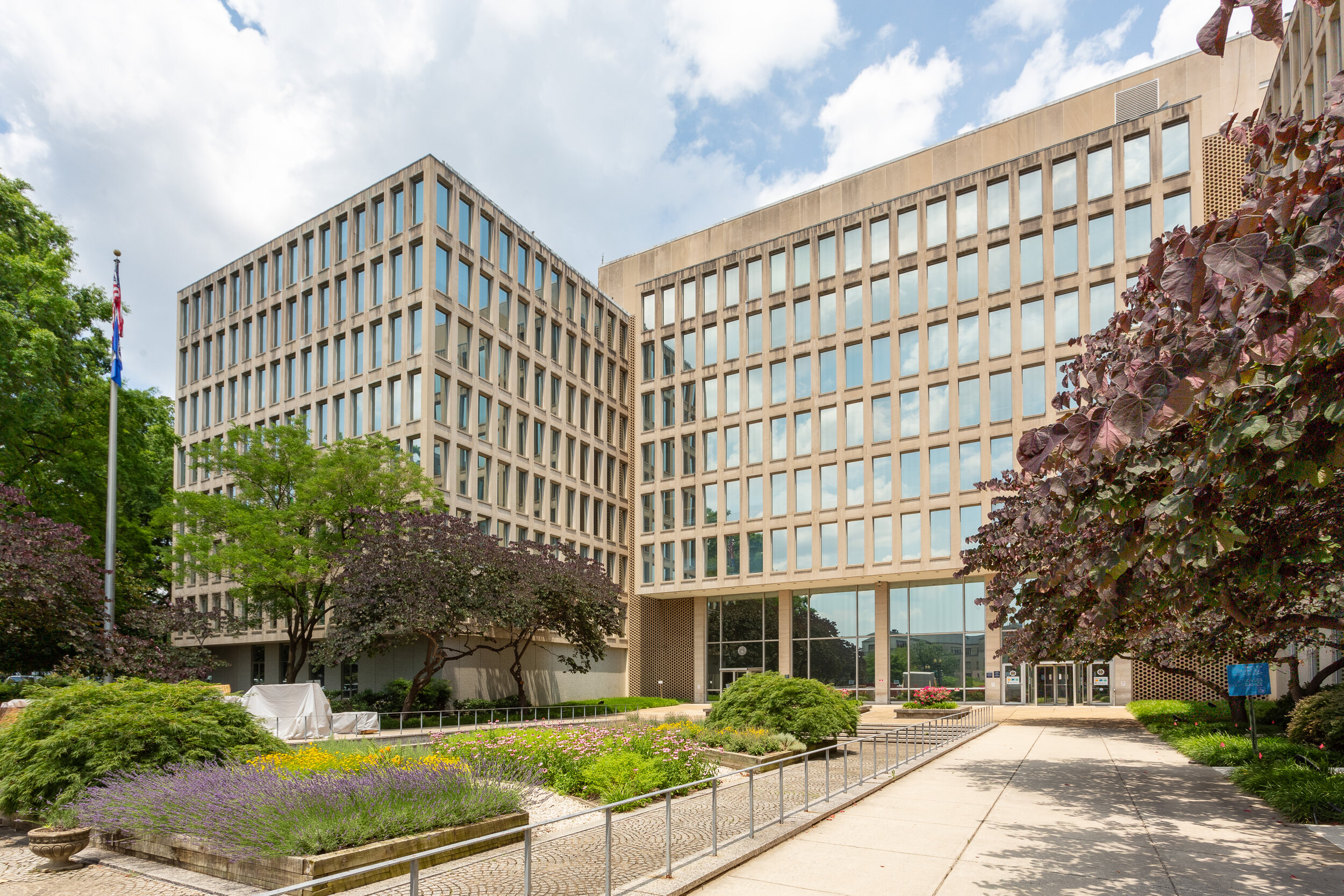Office of Personnel Management II
Verified Annual Savings: $800K and 10,514 MMBTU
Project Highlights
Replaced outdated steam infrastructure with a new hot-water boiler plant
Implemented architectural scope to refresh ceilings and modernize lighting layouts
Included a N+1 redundant heating system, a 2N redundant domestic hot water system, and emergency power interconnection to improve resiliency
Modernized air distribution systems to correct fire safety code compliance
Energy Conservation Measures
High-efficiency condensing heating and domestic hot water plant
LED Lighting retrofits and advanced lighting controls
Airside retrocommissioning
High-efficiency AHUs with variable speed fan walls
Air distribution upgrades and VAV conversions
Project Overview: After CEG completed the Phase I ESPC project at the U.S. Office of Personnel Management (OPM), OPM awarded CEG a $27MM contract in 2018 for a Phase II ESPC project at the facility. The project encompasses a comprehensive set of sustainability upgrades at OPM’s Theodore Roosevelt Building (TRB), a 10-story office building in Washington D.C. The building is owned by the General Services Agency (GSA) and, as such, all measures had to meet the GSA’s design and operational requirements.
Results: This project utilized a deep energy retrofit strategy to leverage interactive effects of HVAC, lighting, and envelope upgrades to reduce central plant capacities by 25+% while increasing efficiency. CEG and OPM/GSA’s efforts on this project and other related initiatives resulted in electricity consumption reductions of 52% and energy consumption reductions of 44%.
OPM also realized significant non-energy benefits including:
Increased Resiliency - This project reduced base HVAC and electric loads, installed redundant heating systems with emergency power, and revised controls to incorporate additional safeties, alarms, and shutdowns.
Ongoing Monitoring - CEG is going beyond standard annual Measurement and Verification (M&V) to quickly detect and address undesired controls changes before savings are impacted. We are utilizing an automated testing system to review BAS data on a quarterly basis and report any changes or discrepancies.
Related Savings - Over the next 20 years, this project is predicted to save OPM/GSA over $50MM in avoided operations, maintenance, repair, and replacement expenses, with savings stemming from (1) reduced steam system maintenance, (2) longer lighting fixture lifetimes, (3) reduced mechanical equipment failures, and (4) avoided asbestos abatement.
Improved Space Utilization - As part of the ESPC, TRB’s lower floors (which were originally designed to house workshops) were upgraded with office-appropriate HVAC and lighting systems. In total, this effort prepared over 40,000 SF for future occupants, which (given standard lease pricing of $60/SF annually) could potentially save the Government $2.4MM per year.
Environmental Health and Safety – This project implemented multiple new HVAC upgrade strategies (e.g., multi-stage air filtration, demand-controlled ventilation in meeting spaces, and advanced outdoor air controls) that have improved indoor air quality. The work also included installation of a new ducted return air system. The new air distribution systems are more efficient and comply with current fire safety requirements. Additionally, the ESPC’s abatement scope of work removed asbestos-based insulation from AHUs, ductwork, piping, and heat exchangers, thus facilitating safer maintenance.





